Obituary: Doris Day, America's archetypal girl next door
- Published
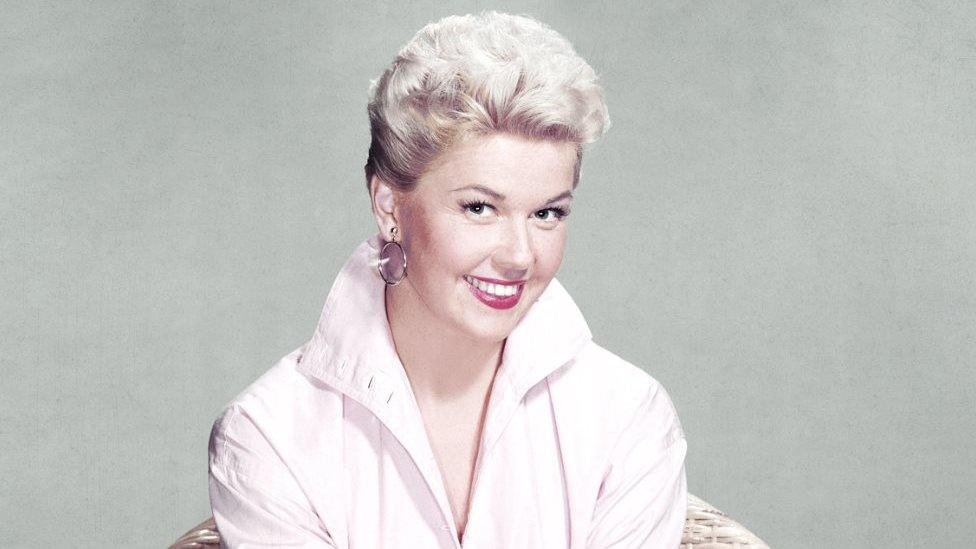
Doris Day was the fresh-faced, all-American girl who became one of the world's most bankable film stars.
Her glittering singing career included timeless classics like Whip Crack Away, Qué Será Será and Perhaps, Perhaps, Perhaps.
On screen, the wholesome, girl-next-door never failed to find love. Off screen, she could not have had less luck: she married four times. One of them beat her and another one robbed her.
Later in life, she suffered the agony of watching her beloved only child die of an untreatable tumour. She retreated to a house in California, surrounding herself with animals and campaigning for their welfare.
'Age is just a number'
Doris Mary Ann Von Kappelhoff came into the world in Cincinnati, Ohio - the descendant of German immigrants - in April 1922.
But for decades, she would insist she was actually born in 1924. In 2018, her birth certificate was dug out of the state Office of Vital Statistics to settle the dispute.
She was wrong, but shrugged it off.
"I've always said that age is just a number," she said. "I've never paid much attention to birthdays."
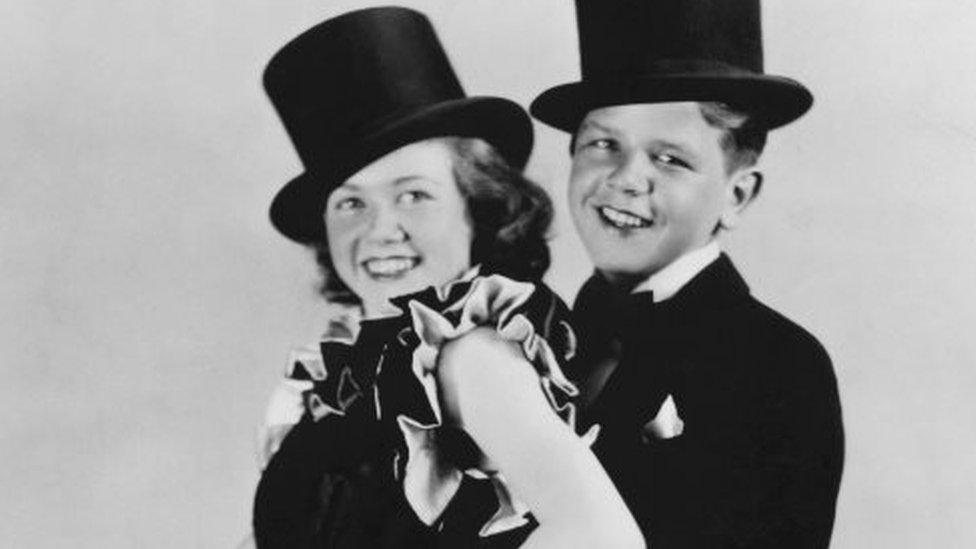
Doris Day, aged 13, with her dance partner Jerry Doherty
Her father, who worked as a music teacher, left his wife for another woman when Doris was 12. The future star was brought up by her mother.
She attended dance classes from an early age and, by the time she entered her teens, was performing regularly with her dance partner, Jerry Doherty, winning prizes at local pageants.
The pair had dreams of trying their luck in Hollywood but, the night before they were due to depart, Day's car was hit by a train. One of her legs was badly broken; her dancing career in ruins.
It took months to recover. She passed the time singing along to the radio and, as she put it, "discovered a talent I didn't know I had". She was particularly enamoured with the sound of Ella Fitzgerald.
Her mother arranged singing lessons for her which led to sessions on a local radio station, where she was heard by the bandleader Barney Rapp.
Breakthrough
According to Rapp, he auditioned about 200 singers before signing the young Doris Kappelhoff.
The song that bowled him over was Day by Day. Rapp suggested she took inspiration from the title and change her name. Kappelhoff was too long to display on the scrolling marquees outside concert venues.
Her breakthrough came while she was working with the Les Brown Orchestra, with whom she had her first hit, Sentimental Journey, in 1945.
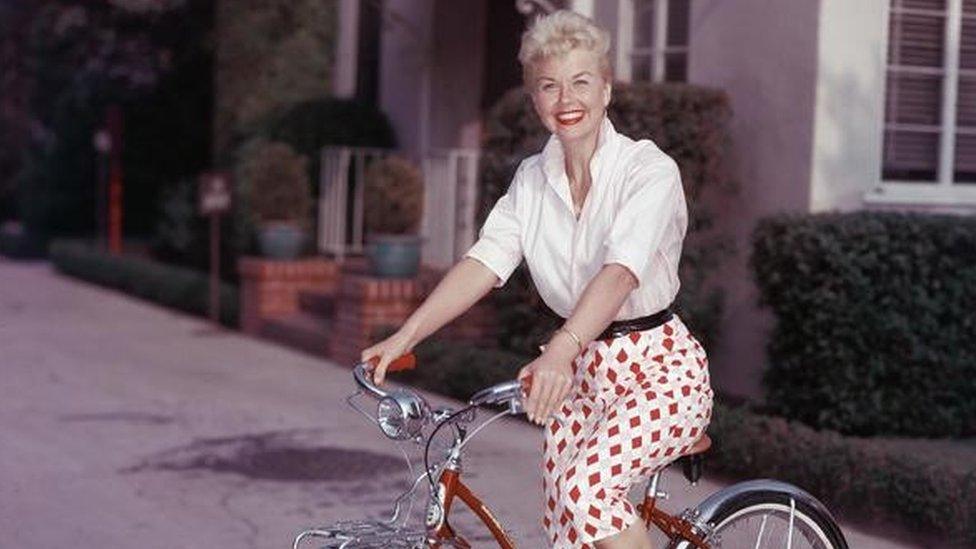
She fostered her girl-next-door image
By this time she had met, married and quickly divorced her first husband, the musician Al Jorden, who sadly proved physically abusive. The couple had one child, her son Terry.
Her second marriage, to actor George Weidler in 1946, lasted just eight months after he failed to come to terms with the success of her career.
By the time she left Les Brown in 1946 she had become one of the highest-paid female vocalists in the world with a string of chart hits.
After singing at a party given by songwriter Sammy Cahn, Doris Day was given a Warner Brothers contract and the lead in the 1948 film, Romance on the High Seas.
Over the next few years, she played in a series of musicals, including Tea for Two, On Moonlight Bay, By the Light of the Silvery Moon and I'll See You in My Dreams.
Her roles were undemanding, but as Miss American Pie, the tomboy girl-next-door who morphed into the beautiful blonde, audiences found Doris Day irresistible and US soldiers serving in the Korean War voted her their favourite star.
Out of fashion
In 1952 she formed her own production company, in partnership with third husband, Martin Melcher, and a year later starred in the film musical Calamity Jane, which contained a string of hit songs including the Oscar-winning Secret Love.
She surprised the critics with the strength of her performance in Love Me or Leave Me, a fictionalised account of the life of nightclub singer Ruth Etting, who suffered the violent attacks of her gangster husband, played by James Cagney.
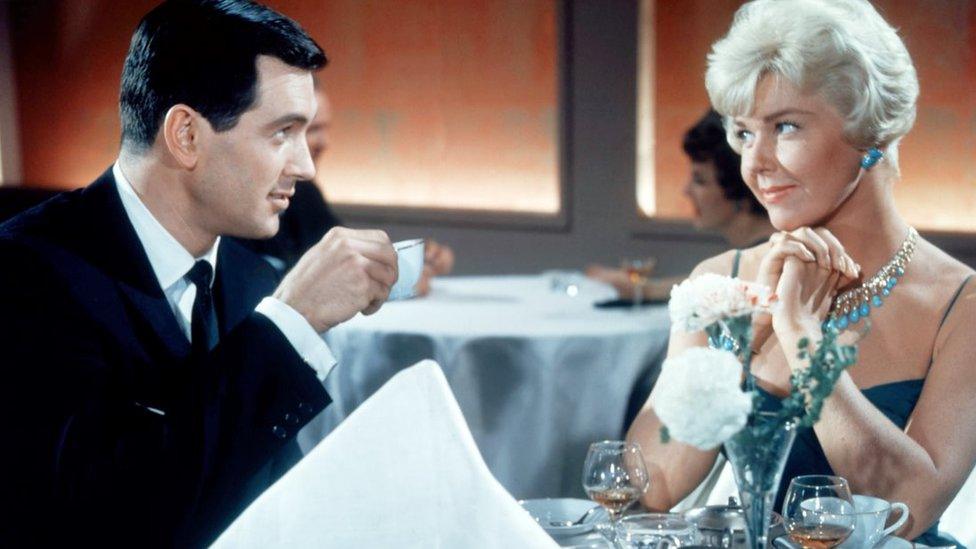
She starred with Rock Hudson in 1959's Pillow Talk
There was also a performance in the Alfred Hitchcock film The Man Who Knew Too Much, which spawned one of her biggest hits - Qué Será Será.
Her biggest cinema hit came in 1959, with Pillow Talk, where her on-screen partnership with Rock Hudson, earned her an Academy Award nomination for Best Actress.
She continued to make films in the 1960s, some of them such as Glass Bottom Boat and Where Were You When the Lights Went Out, did reasonably well at the box office.
But as the sexual revolution of the 1960s stormed Hollywood, Doris went out of fashion. Critics poked fun at the wholesome image: one declaring himself "so old, I remember her before she became a virgin". Audiences found it increasingly hard to connect.
She turned down the Sound of Music, declaring herself too American to play a nun from Salzburg. But nor was she ready to change her image and embrace the times: rejecting the role of Mrs Robinson in The Graduate. She said she found the script to be "vulgar and offensive".
Comeback
Her husband, who had been managing her career, died suddenly in 1968 and Day was horrified to discover he had squandered all her earnings, leaving her bankrupt.
Prior to his death, and without her knowledge, he had also committed her to a television series; Day was exhausted but honoured the contract and The Doris Day Show ran successfully for five years until 1973.

Doris Day and her only son, Terry Melcher, in the late 1980s
Day fought a long battle in the courts against her husband's business partner, the lawyer Jerome Rosenthal. She was eventually awarded more than $22m, then the biggest civil settlement in Californian legal history - although she eventually settled for a quarter of that sum.
In 1976, she was married for the fourth time, to Barry Comden, who was a waiter at one of her favourite restaurants. The union ended in 1981.
There was a brief comeback when she released her 29th studio album, My Heart, which contained songs she had recorded but never released during the 1980s. It reached the UK Top 10 in September 2011.
Doris Day had been a strong advocate for animal welfare since founding Actors and Others for Animals in 1971, which campaigned against the fur trade. She collected furry things wherever she found them, becoming known on set as the "Dog Catcher of Beverley Hills".
Following her retirement she ran the Doris Day Animal League at her home in Carmel, California, her house filled with stray animals rescued from the streets.
She repeatedly turned down the offer of a lifetime achievement Oscar but, in 2004, she was awarded the Presidential Medal of Freedom by President George W Bush for her work as an entertainer and her commitment to animal welfare.
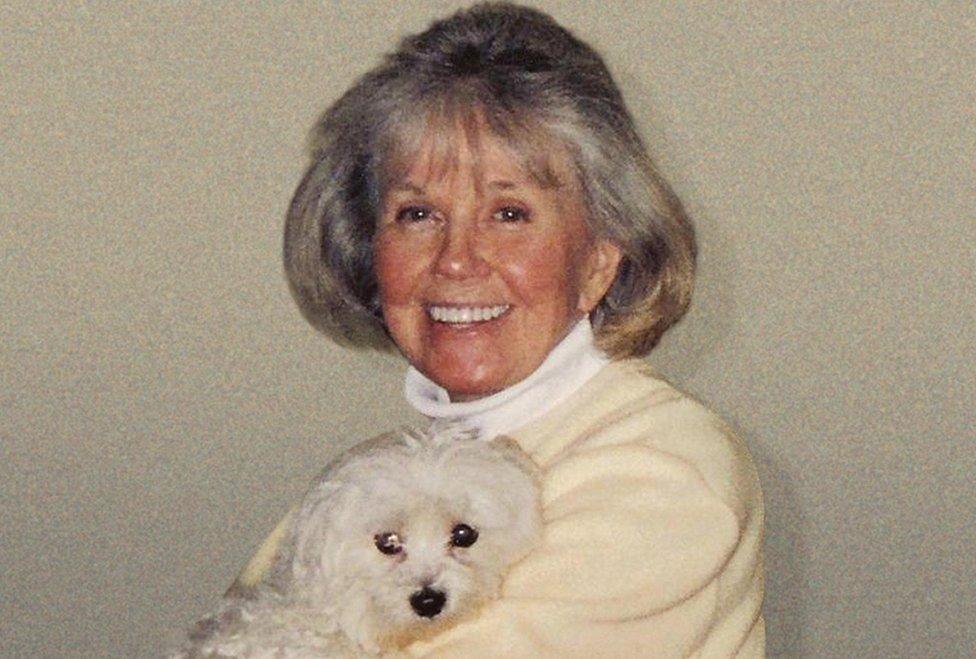
She devoted the latter part of her life to animals
Her fear of flying prevented her attending the ceremony in person. In the same year, her only child Terry, who had tasted success as a songwriter and producer, died of melanoma.
She remained active in choosing which films, adverts and TV shows got to play the Doris Day hits, but resisted all attempts to lure her out of retirement. She chose dogs and cats over fame and fortune, but had no regrets.
"I've always believed things work out exactly as they're supposed to," she told one interviewer.
Or in the words of her song, Qué Será Será.
- Published13 May 2019
